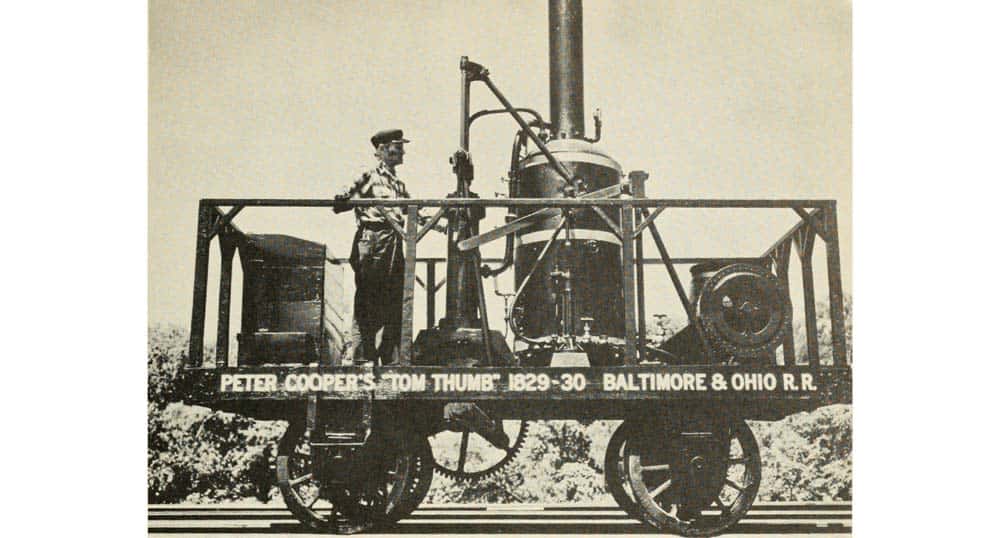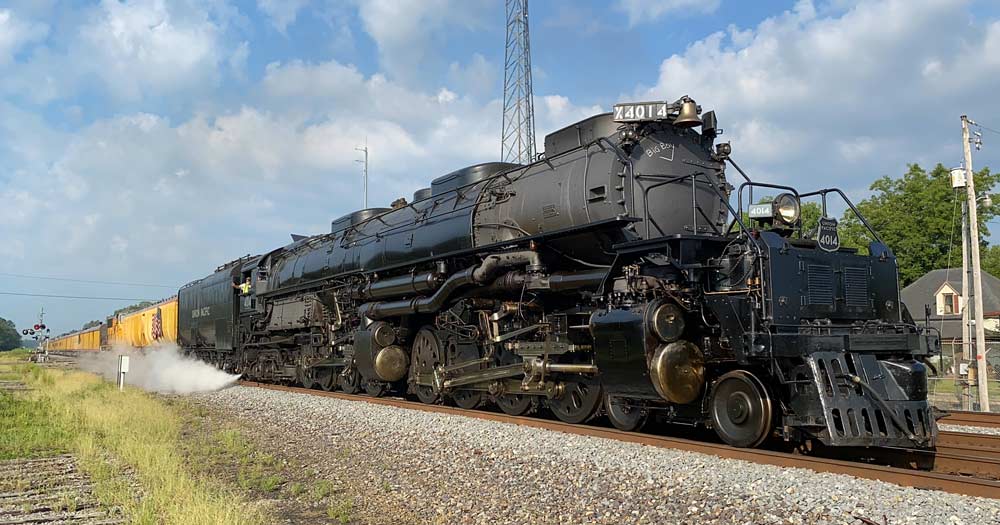What’s the Speed Record for Steam Locomotives?
The steam locomotive paved the way for cultural and economic development thanks to the locomotive’s ability to move people and freight farther and more efficiently than horses. At the beginning steam locomotives couldn’t boast of an impressive speed. However the Germans and then the British and also the Americans began to push the speed envelope. Top speeds were reached and then surpassed, almost right to to the end of the steam era.
What’s the highest speed these locomotives attained? What is the top speed for a steam locomotive in the US? Let’s find out!
What was the top speed of early locomotives?
Two of the earliest locomotives in the USA, ‘Tom Thumb’ (B&O) and ‘Best Friend of Charleston’ (South Carolina), were slow by nearly any standards – except the time in which they were built – as they drew praise from passengers, onlookers and a second look from businessmen.
Tom Thumb weighed 10,000 lbs and demonstrated a speed of 13 mph. The Best Friend of Charleston, on the other hand, had a speed of 30 mph when empty and 12 mph when completely loaded.
During the 1860s, most locomotives were wood-burning with a 4-4-0 wheel arrangement (American type) being the most popular choice of railroads. If the track was straight, aligned, and level these locomotives could achieve a speed of sixty miles per hour.

What is the speed record for steam? When was it set?
The top speed for steam locomotives is held by a British Class A4 locomotive named the Mallard. The British locomotive recorded a speed of 126 mph (203 km/h) on July 3rd, 1938, during a test run that occurred near Stoke Bank near Grantham, or about 110 miles north of London. The record held by the 4-6-2 (Pacific type) has been challenged several times, but never officially broken.
Prior to the Mallard breaking the record, the top speed was held by by New York Central #999. Designed by Willian Buchanan, a defining aspect of this 4-4-0 locomotive was its 86.5-inch diameter driving wheels, though they would be replaced with 70-inch wheels. The locomotive exceeded 100 miles per hour in May 1893 before making an appearance at the World’s Fair, where it reached a record speed of 112.5 mph (181.1 km/h).
It is worth noting here that certain factors attributed to the high speed of steam engines. One of the biggest factors here is the insulation of the boiler that helped retain heat, thus propelling the second engine faster close stuff. The next tool in line is its device that utilizes the heat within the exhaust. next, it warms the resultant water even before it passes to the boiler.
That is because any contact of close water in the boiler can lead to a sudden power loss and you would need to wait for the power to resume and the water to heat up. You should also keep a proper draught under the fire. Unless you do this, the fire within your firebox won’t sustain and the boiler won’t be warm enough either.
Fuel is yet another factor that increases the speed of steam engines. You can typically power a steam engine via a variety of methods. However, two common and popular options here would be coal and wood. The former fuel would generate greater heat when compared to its counterpart. This is especially true if you’re using high-quality coal that is likely to burn longer.
Today, you’re likely to find oil and even diesel fuel used to power steam locomotives. These fuels are consistent, and the degree of burn is higher.
Speed Differences of Passenger and Freight Locomotives
Railroad operators were cognizant of the importance of speed for passenger service since speed could be a huge marketing tool. Therefore these locomotives tended to provide speed, though they were typically able to haul fewer cars and less weight.
While some may assume that larger locomotives would be able to travel at higher speeds, locomotives used in freight service were typically significantly heavier than their passenger service counterparts which allowed the locomotives to pull long heavy loads of freight but at the cost of speed.
What is the fastest operating steam locomotive today?
The Union Pacific Big Boy is one of the most popular steam locomotive classes built in the USA and has fans worldwide. It’s one of the largest too, featuring a 4-8-8-4 wheel arrangement. With a full tender, these locomotives weighed roughly 1.2 million pounds.
These massive iron horses have a maximum speed of about 80 miles per hour, which is fast for a freight locomotive. The only Big Boy running now, Union Pacific 4014, hauls steam passenger excursions and only does so at about 50 miles an hour.

Locomotives in excursion service in the United Kingdom regularly exceed that speed. So, it looks like teh British Isles keep the steam speed record.
Will the Steam Locomotive Speed Record be Broken?
With railroads going full diesel in the mid 20th century, steam locomotives were quickly retired and many were sent to the scrapper’s line. Thank goodness some steam locomotives survive in operational condition around the world to bring the age of steam to young and old alike in the age of the internet.
But we’re unlikely to see any of those steam locomotives break the Mallard’s world record, although – wouldn’t that be fun to see!






